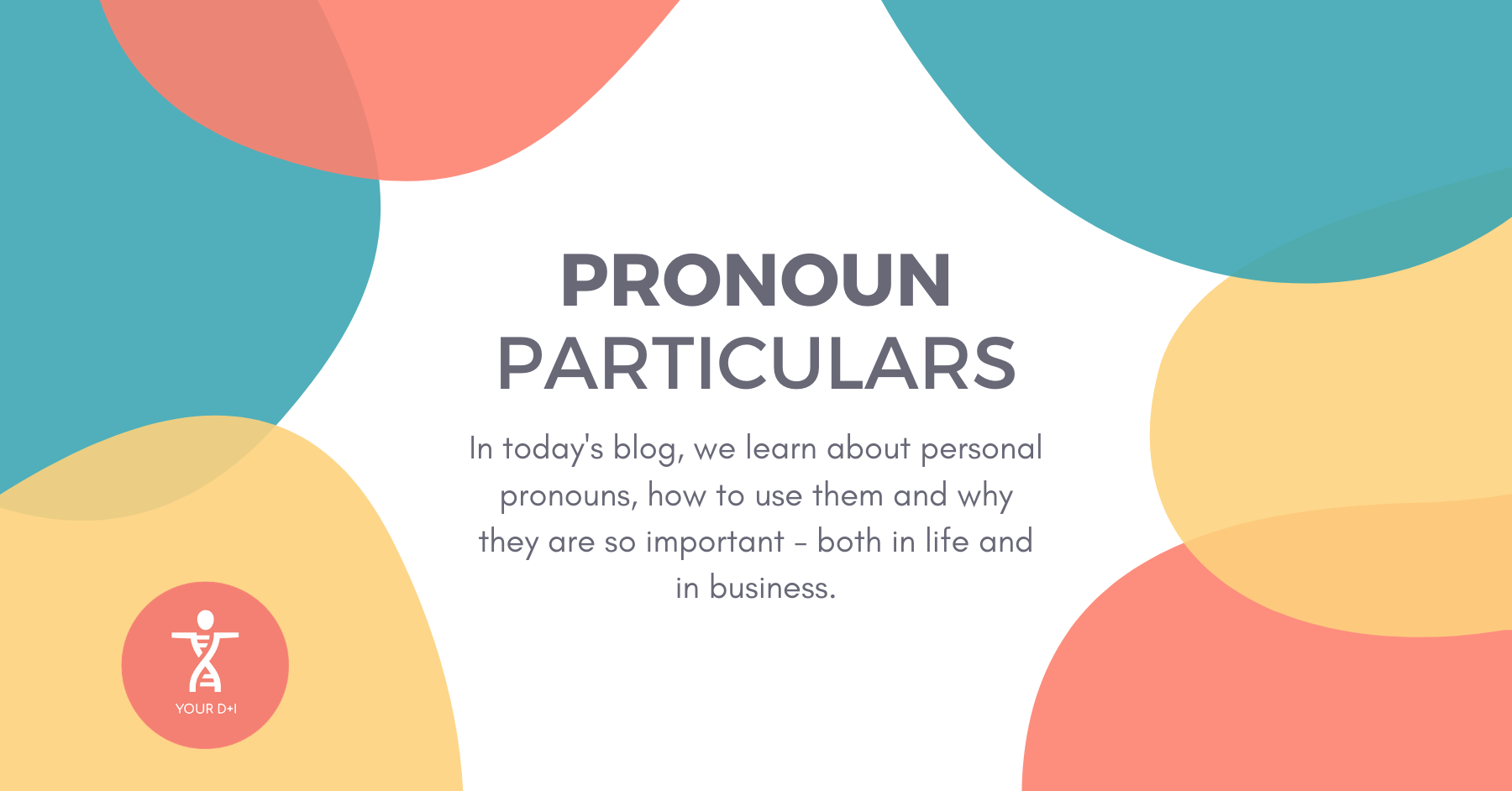Pronoun Particulars
Making an effort to understand personal pronouns will improve your company’s diversity and inclusion in many ways. For one, you gain the appreciation of your trans staff and reduce drop-out rates. You will also ensure you aren’t excluding any trans or non-binary talent in your recruiting process. After all, you don’t want to prevent an important hire or internal progression just because of misused pronouns.
Being informed about personal pronouns is essential if you want to be an inclusive employer. This is because it lets your staff know that your support their gender identity. In today’s blog post, we’re going to explore what pronouns are and how to use them.
What are pronouns?
Pronouns are words that we use in place of nouns. When talking about other people, we don’t like to repeat their name over and over again. So instead, we use personal pronouns like ‘she’ or ‘him’.
When a trans person socially transitions, they often change their pronouns. If they used to use ‘he/him’ pronouns, they might start using ‘she/her’ or ‘they/them’ pronouns.
Why are personal pronouns so important?
Pronouns are incredibly important to many trans people. This is because their proper use shows that you respect their identity, just like using their correct name.
Many trans people experience discomfort, also known as gender dysphoria, when others use the incorrect words to describe them. When others use the correct words, however, you can avoid causing these negative feelings.
What are 'they/them' pronouns?
‘They/them’ pronouns are often used by non-binary people, who identify outside the constraints of ‘male’ or ‘female’.
Using ‘they/them’ pronouns to describe a single person rather than a group of people can be a little confusing at first. You may not have knowingly done it before, but it’s almost certain that you’ve do so subconsciously.
For example, imagine you are walking down the road and see a pair of sunglasses on the ground. You might think to yourself, ‘Somebody has lost their sunglasses.’ When you use the word ‘their’ here, you’re talking about one person rather than a group. But because you didn’t know their gender, you used ‘they/them’ pronouns for the sunglasses-owner.
What are neo-pronouns?
Neo-pronouns are lesser known pronouns that are used by some trans and/or non-binary folks. This may be because other pronouns cause them discomfort.
Examples on neo-pronouns include ‘xe/xem/xyr’ and ‘e/em/eir’. They are far less common than other pronouns, but inclusive employers should have at least some understanding of them.
How can I learn someone's personal pronouns?
You should try your best when somebody at work asks you to change the pronouns you use for them. Whatever the new pronouns are, it can sometimes take a while for them to stick. However, with consistent practice, you can get someone’s pronouns down fairly quickly.
This is especially true if you speak to or about them a lot. However, if you don’t have much interaction with your colleague, try a pronoun dressing room. This allows you to input a name and a set of pronouns so you can practise through a story.
What if I mess up someone's personal pronouns?
It happens. While it can sometimes hurt their feelings, most people will be understanding. One of the worst things you can do, though, is loudly apologise in public and create a spectacle. Everyone is different, but most people will appreciate you briefly apologising and carrying on with the conversation as normal. Just remember to keep trying.
What else can I do?
Someone’s pronouns aren’t always what you expect, and if you use the wrong ones, it creates a sticky situation. However, there is a simple way to prevent this – ask! While it can sometimes be awkward to ask someone’s pronouns when you first meet, you’re doing the right thing. And it’ll be worth it when you ask someone who really appreciates it.
You can also help normalise the discussion of pronouns by letting people know yours when you introduce yourself. Do this digitally too by putting them on your LinkedIn profile and any digital work environments. You can normalise ‘they/them’ pronouns by using them instead of the phrase ‘he or she’ in any content you produce. This is particularly important if you’re sending this content to your employees.
Finally, avoid the term ‘preferred pronouns’. This is an outdated term that is now discouraged in the trans community. This is because it implies that using someone’s correct pronouns is a preferable choice rather than a necessity. In reality, everyone should be making an effort with personal pronouns to ensure that inclusivity is at the heart of your company culture.

